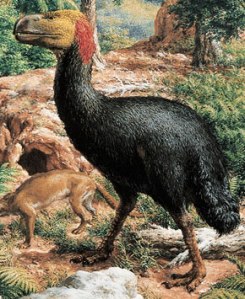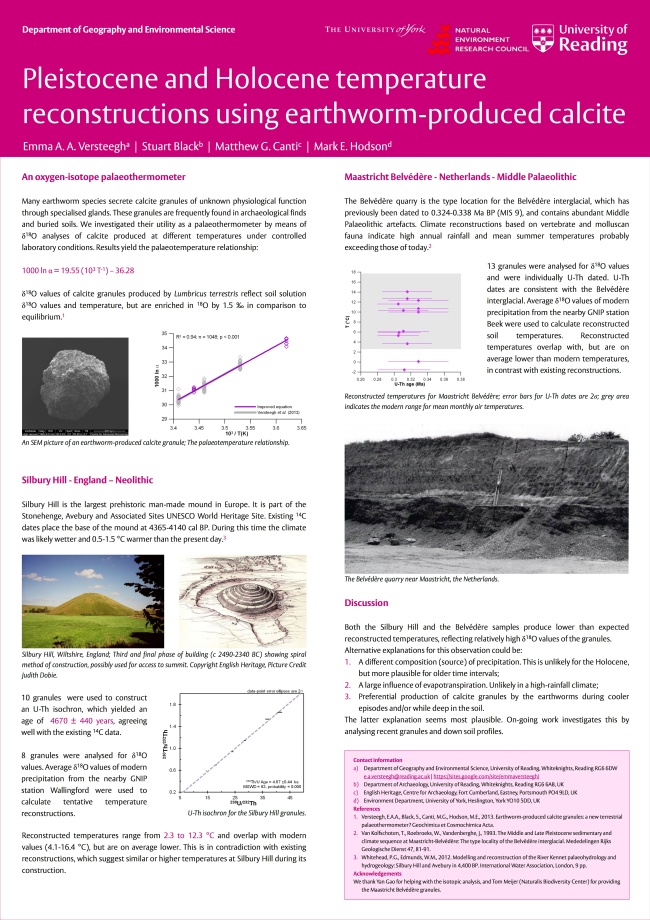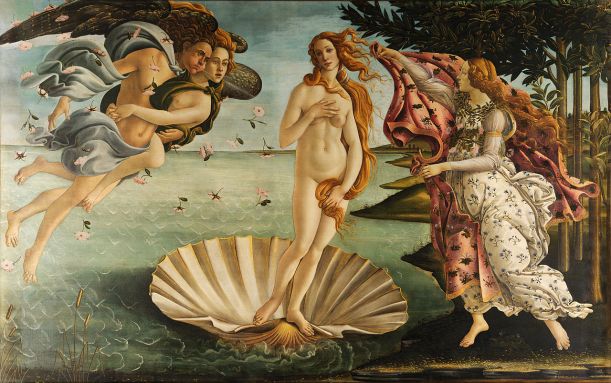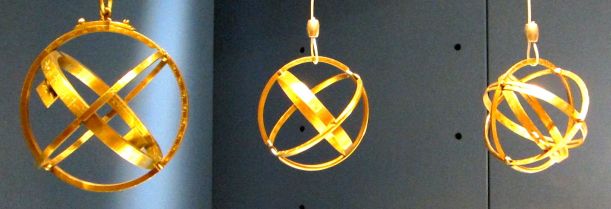Last week at Goldschmidt I was interviewed by Marie-Aude Hulshoff of the European Association of Geochemistry. They published a series of interviews with early career scientists on their website. She asked me about how I got here and about my future plans.
Category Archives: Conference
Gold(schmidt) Rush
One of the nice things about Sacramento is that, unlike LA, it has real rivers, with water in them and levees along them. This week I enjoyed a few beautiful morning runs along the American River, where there is a bicycle path on the levee. I almost felt at home!
As there were no oral sessions on Wednesday afternoon, we took the opportunity to explore the area some more and went to Folsom Lake, a reservoir in the American River about 40 km northeast of Sacramento. The on-going drought was very visible in water levels about 15 m lower than normal. Still, it is a beautiful area, and swimming was great.
Today’s plenary speakers Andrea Foster and Christopher Kim spoke about “The Environmental Legacy of California’s Gold Rush: Arsenic and Mercury Contamination from Historic Mining”. They noted that Thursday might be too late in the week to warn us for the widespread contamination with Hg and As.
Indeed, reading up on Folsom Lake I found out it flooded a mining town, Mormon Island, which has recently been exposed for the first time in 55 years because of the drought. Assuming the mine and its tailings are also under that lake, I might indeed have had second thoughts about swimming! However, apparently it is safe to eat the fish caught there, so I’m not too worried.
Across California
Goldschmidt in California meant a drive instead of a flight. The route from Pasadena to Sacramento lead us through the Central Valley of California. While living in greater LA we have been well aware of the drought going on in this state, it was still quite sad to see the many fields transformed into desert, and almond plantations dead and cut down. We also saw the thermometer steadily go up to a balmy 43 °C.

Bronson Canyon (the Bat Cave) in Griffith Park, Los Angeles, California (photo by Mark S. Cramer, MD, FAAFP).
Monday was mostly a day of talks on the solar system. Starting off with Andrew Westphal talking about fluffy interstellar particles, and Meenakshi Wadhwa showing that the Solar System originated in an active star forming region, it was very interesting to learn about the latest science coming from the Curiosity Mars Rover, during the plenary by Pamela Conrad. David Blake had a great follow-up on this with his keynote on the mineralogy of mudstones at Yellowknife Bay, Mars. Who knew that the best Earth-analog for these mudstones is also the entrance to the Bat Cave!
Today’s session on Coastal Archives of Climate Change was one of my highlights so far. Very interesting catching up with what has been happening in sclerochronology and related fields. Howard Spero showed some beautiful seasonal isotope records of oyster shells from Jamestown, Virginia, the first permanent English settlement in the Americas. Heather Black also spoke about oysters, but showed human influence in historic nitrogen isotope records.
Goldschmidt is also the conference where there are always lots of people that look at biomineralisation in great detail. This afternoon’s keynote by Susan Stipp was an excellent and engaging presentation on why this is relevant, and how some of the regulation on mineralization by organisms works.
For my own session and presentation I still have to wait until Thursday evening (posters) and Friday morning (orals). In the meantime there will be a lot more exciting science to hear about. You can follow some of it on Twitter #goldschmidt2014.
EGU2014
Two weeks ago I was at the European Geosciences Union Annual Assembly in Vienna. I promised to blog about it, but apart from some tweets, miserable failed at that. I did write a short trip report for the Mineralogical Society, who provided funding. Here it goes:
The Mineralogical Society enabled me to attend this year’s European Geosciences Union General Assembly by means of a Senior Bursary. My postdoctoral project at NASA-JPL has yielded interesting data on speciation of carbon in basalts, and carbon in the food chain around the world’s deepest hydrothermal vents (Mid-Cayman Rise). I have been keen to present and discuss my findings at an international meeting and an excellent opportunity to do so arose with the session “Hydrothermal energy transfer and its relation to ocean carbon cycling: from mechanisms and rates to services for marine ecosystems” at EGU2014.
As I am relatively new to the field of hydrothermal vent research, it was exciting to meet people, whom I only knew by name. The session started off with several excellent oral presentations, of which I learned a lot. Did you know, for example, that Hydrothermal particulate organic carbon could be the dominant source of carbon to the seafloor? And that iron in the ocean probably mostly derives from hydrothermal sources? In the afternoon I presented my poster entitled: “Previously unsuspected dietary habits of hydrothermal vent fauna: The bactivorous shrimp Rimicaris hybisae can be carnivorous”. There was considerable interest for my poster and I had some lively discussions with colleagues in the field. Also, I received some good suggestions on the interpretation of my data.
It had been five years since I had been to an EGU General Assembly, and I almost forgot how nice it is to also stay in touch with the wider field of earth sciences, and some “old” interests. It was great to learn about new developments in for example stable-isotope biogeochemistry and palaeoclimatology. After having worked in several positions in different countries, a meeting like EGU also provides the opportunity to catch up with many former colleagues. Many stories were told, but more importantly, many plans were made for research collaborations and future grant proposals. All in all, a very productive meeting. Thank you, Mineralogical Society, for enabling me to attend it!
Unsuspected dietary habits of hydrothermal vent fauna
The poster I am presenting today at EGU2014.
Goldschmidtten
The Goldschmidt conference is the biggest meeting of geochemists anywhere (and if there isn’t a collective noun, there should be). This year, me and more than 4000 other [collective noun]s gathered in the renaissance capital of Florence. To see even a fraction of what was on offer would have required a lot of running, and probably a telescope: 22 sessions, some with 10 or more sub-sessions, and each of them with oral and poster presentations. I felt like I spent most of the week next door to myself.
Sunseeds
The opening day set the bar somewhere in the stratosphere, with a first hand view of the birth of the solar system. In an overflowing Palazzo di Congressi, Rick Carlson, of Washington’s Carnegie Institute, gave a plenary address worthy of the location: He took isotopes and made them Galilean. Nanograins of spinel teased out of meteorites, he suggested, could be the…
View original post 1,161 more words
Goldschmidt 2013 revisited
The Goldschmidt blogging team have all had time to travel back to their homes, some even moving to a new country! We’ve put together our highlights from the conference, see them below. Feel free to add your own personal highlights in the comment section at the bottom! Enjoy

Though Goldschmidt2013 happened not even 3 weeks ago, it seems more like 2 months for me. Last week I spent in my home country, the Netherlands. Then I moved to Southern California and started a postdoc at JPL this week. Busy and exciting times!
Thinking back, two things really stood out for me at Goldschmidt. The first was meeting a “famous” colleague, who was very interested in collaborating on some of my samples. This is always the best about conferences I think, meeting new people, catching up with old friends, and talking about science. I’m always full of new ideas and motivations after such a week. The second was convening a session for the first time. We did our best to invite a diverse range of speakers, and I think it turned out a very interesting session.
Emma.
————————————————————
 There were so many highlights to this year’s meeting in Florence I have struggled to distil them to a workable number. Therefore I have selected my 3 favourite quotes from notes I made during Goldschmidt2013. In chronological order:
There were so many highlights to this year’s meeting in Florence I have struggled to distil them to a workable number. Therefore I have selected my 3 favourite quotes from notes I made during Goldschmidt2013. In chronological order:
“Taking one river sample per month is like listening to Beethoven’s symphonies one note per minute” Jérôme Gaillardet
I mentioned this quote in another post during the week. It was taken from a presentation as part of the Critical Zone Observatory Open Forum Meeting on Monday evening. Jérôme was outlining the importance of holistic studies with thorough sampling to understand Critical Zone processes.
“Let’s skip all the details and go straight to the conclusions. That’s usually how I read a paper” Philippe Van Cappellen
Philippe, in his second keynote talk of the day (I know!), wanted to make sure the session got to the important aspects of several studies from his group. With a talk title of “Where Groundwater Meets Surface Water” there obviously needed to be a wide range of results presented to give a clear picture of this complicated environment. Philippe’s whistle-stop approach enabled him to get through a whole load of important processes, with clarity and without getting bogged down, refreshing!
“Icebergs are mobile MacDonald’s for phytoplankton in the Southern Ocean” Martyn Tranter
Also from a session’s keynote talk, this excellent turn of phrase evokes a mental image which has made Martyn’s Thursday afternoon talk stick with me for 2 weeks.
Along with the numerous Goldschmidt highlights there were areas for improvement… the main one, of course, was that we didn’t get Morgan Jones’ #OverlyHonestTalks theme running. This would be a trend on twitter where researchers present their results without the hype, for example:
“When two waters are mixed in different proportions, the stable isotopes of water form a line”@snowandscience
“The chemistry of a glacial river changes when the glacier melts” @drmorganjones
“Added acid to a solution and the pH went down…” @brayaw
Maybe next year…
Andy.
————————————————————
Once again, Goldschmidt flew by and two weeks later I still find myself thinking, “Darn! I missed that [talk, poster, person].” Oh, well. You can only do so much with 1 week, 4100 people and 19 simultaneous sessions. Nevertheless, there are some experiences that stand out when I look back on the whirlwind week in Florence:
L-R: Jena Johnson (Caltech), Judith Klatt (invited speaker-MPIMM Bremen), Elizabeth Swanner (Univ. Tuebingen), Paula Welander (keynote-Stanford), Amber Jarrett (ANU), Nicole Posth (Univ. Southern Denmark), Trinity Hamilton (Penn State). Photo courtesy of Jenn Macalady.
Presenting in an all-female session on Monday (19e: Phototrophic life and Earth’s redox evolution) was a huge highlight. The session was organized by Jenn Macalady and Trinity Hamilton from Penn State and covered biomarker synthesis, stable isotopic signatures and redox cycling (Fe, S and Mn) mediated by phototrophs in analogue sites, laboratory experiments and geological samples. To see good science and representation by woman in this session was a welcome contrast to the predominantly male recipients of awards at Goldschmidt 2013, already mentioned by Emma Versteegh in her post on August 27.
Making connections with other scientists is always one of my favorite parts about Goldschmidt. One person I enjoyed meeting this year was Prof. Bill Gilhooly from Indiana University-Purdue University, Indianapolis (IUPUI). Bill gave an invited talk in session 3g (Reconstructing Ancient Surface Environments from Modern (Near) Analogues) on Friday about “ground-truthing” the multiple sulfur isotope signatures that are used to reconstruct past redox conditions based on his work in modern sulfidic sediments. We compared notes over dinner with a group one night about the complementarity between his work on sulfidic conditions and mine that is focused on ferruginous conditions. And of course “small world” syndrome set in after realizing my sister-in-law is a graduate student in his department.
Finally, I always appreciate the diversity of sessions at Goldschmidt and that it gives me exposure to research areas a bit removed from my own, or just new to me. This year I spent a lot of time in sessions that dealt with trace element distribution in sediments, seawater and marine biota, and Ocean Anoxic Events (OAE) (e.g. theme 17: Oceans and Atmospheres). It was great fun to observe what the hot topics are in these areas, but I did encounter some limits to my own knowledge: I’m still looking for someone to explain to me what is meant by the term “leaky bucket”!
Betsy.
————————————————————
 Goldschmidt2013? I am already thinking of 2014! But casting my mind back, it was a great meeting. Despite getting lost too many times among the lecture rooms in the basement, like some sort of minimalist maze where you never quite know which direction you are walking, it was a conference centre design like no other. If I felt in need of a workout, I simply took the long way round … walking from floor to floor via the never-ending external ramps.
Goldschmidt2013? I am already thinking of 2014! But casting my mind back, it was a great meeting. Despite getting lost too many times among the lecture rooms in the basement, like some sort of minimalist maze where you never quite know which direction you are walking, it was a conference centre design like no other. If I felt in need of a workout, I simply took the long way round … walking from floor to floor via the never-ending external ramps.
As for Science … I enjoyed some great discussions over the poster sessions, sat through talks on planetary evolution in the early Solar System that blew my mind (without really working out how credible they were), and really appreciated the quality of so many of the presentations, especially from the grad students from our Department! It was a pleasure giving the citation for a colleague’s medal, meeting old friends in the beer queue and sampling some of the excellent food on offer in Florence. What a great city for a conference. I’m looking forward to future Goldschmidts, and must get back into the lab to collect the next dataset in preparation.
Simon
————————————————————
 Goldschmidt2013 can be described by a few words: whirlwind, tiring, stimulating and most of all amazing. This was my second Goldschmidt conference and my first as a blogger. Actually, it was the first conference I have ever blogged and I have to say it made for a different feel. At conferences I have mostly gone to talks that apply to my own field in some way and thought about the science as it applies to my work. However, this time I had to look at talks through a second lens: that of a blogger/journalist. For the first time I was trying to think about more than just myself and my own work when viewing talks and posters. At this Goldschmidt I was trying to think about how the work of others could be distilled into a blog post, or how their work could interest readers. It made for a very new and interesting experience and I think it helped me get more value out of attending a conference than I have ever experienced before.
Goldschmidt2013 can be described by a few words: whirlwind, tiring, stimulating and most of all amazing. This was my second Goldschmidt conference and my first as a blogger. Actually, it was the first conference I have ever blogged and I have to say it made for a different feel. At conferences I have mostly gone to talks that apply to my own field in some way and thought about the science as it applies to my work. However, this time I had to look at talks through a second lens: that of a blogger/journalist. For the first time I was trying to think about more than just myself and my own work when viewing talks and posters. At this Goldschmidt I was trying to think about how the work of others could be distilled into a blog post, or how their work could interest readers. It made for a very new and interesting experience and I think it helped me get more value out of attending a conference than I have ever experienced before.
The highlights for me were numerous. Firstly, I loved giving my own talk! It was fun to get up in front of my peers and discuss the work that I and others in my lab have been doing on Fukushima iodine. I also enjoyed the other talks in my session and came away with lots of great ideas and possible collaborations. The second highlight was the Impacts of Geochemistry session. This session was tailor made for blogging and a lot of the talks were fascinating. The talk by John Ludden on the Geochemistry of London was very interesting, as was the talk by my old Prof Kurt Kyser on Geochemical Tools for finding Ore Deposits. The third highlight was the personal interactions. For example, meeting the other bloggers was great. We all were there for the same reason and it was great to interact on personal level as opposed to digital.
Here’s looking forward to next year in Sacramento!
Matt
————————————————————
What were your highlights? Don’t forget to give your feedback on Goldschmidt 2013 too!
Temperature reconstructions with earthworm calcite
A tourist in Florence
After four days of Goldschmidt 2013 my brain had reached geochemistry saturation state, so I figured it was time for some tourism. Earlier this week I had only ventured into the city in the early morning, and I only now realised how peacefully quiet it had been. Florence is a virtual ants nest of tourists and the people trying to sell them things; not my favourite habitat.
I did manage to get a ticket for the Uffizi Gallery without too much queueing and spent a while looking at beautiful and some famous paintings such as “The birth of Venus and four portraits by the Dutch 17th century master Rembrandt van Rijn. Of course I had to see the Museo Galileo as well. Lots of fascinating scientific instruments, globes, clocks and what have you. Too bad they didn’t sell any replicas in the museum shop.
The early bird catches the worm

The “terror bird” Gastornis (http://research.amnh.org/)
For many of us being an early bird becomes progressively more difficult as conference fatigue takes its toll. I was glad to see a sizeable crowd managed to be there for the start of our session on the role of biominerals in biogeochemical cycling, which happened to be about birds and worms, and some other creatures.
Thomas Tütken showed us that the fearsome Eocene terror bird was neither a predator, nor a worm-catcher, but a gentle herbivorous giant instead! Also, the oxygen isotope composition of the bones of large herbivores forms a remarkably good archive of Cenozoic climate, agreeing well with the famous Zachos curve.
Then it was my turn to talk about worms, who are unexpected biomineralisers, and appear to precipitate atmospheric carbon dioxide in carbonate granules in the soil. Loredana Brinza studied metals in these granules, and demonstrated that they can significantly contribute to zinc immobilisation in polluted soils.
From animals we switched to plants, with two presentations about phytoliths: little chunks of silica produced by plants. Jean-Dominique Meunier and Eric Struyf showed that the contribution of phytoliths to global silicium cycling is much larger than previously thought and is of the same order of magnitude as the marine contribution of diatoms. Humans remove a lot of silicium from the global cycle by harvesting crops, and this likely reduces crop yields.
Going from the terrestrial to the marine realm, Ruth Carmichael spoke about nitrogen in bivalves and their potential for nitrogen sequestration as well as reconstruction of nitrogen cycling before human influences, using shells from middens that are thousands of years old. Adilah Ponnurangam stayed with the bivalves, but looked at rare-earth elements and showed that they reflect seawater composition.
The session ended with Michaël Hermoso presenting some meticulous laboratory culture experiments on coccolithophores, and size-related differences in carbon-isotope fractionation. All-in-all a very interesting morning, and a satisfying debut as a session chair.








